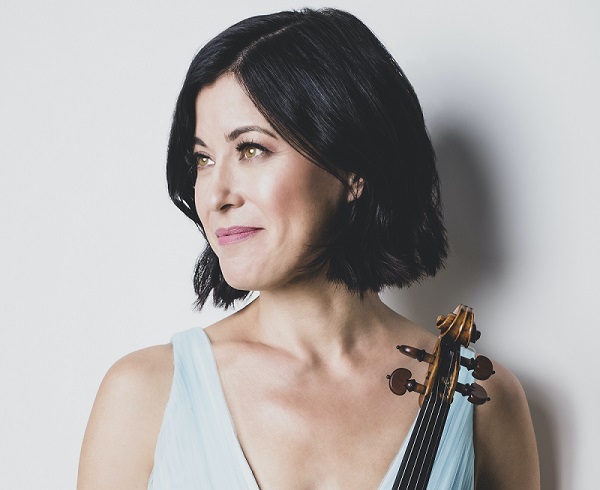
A RARE FLOWERING IN WINE COUNTRY
ROHNERT PARK, CA—It’s a parttime orchestra, from a smaller city (Santa Rosa), having a conductor splitting his services with an out-of-state ensemble. So why the Santa Rosa Symphony, where you find yourself returning again and again, despite (in this case) a 90-minute drive to get there?
Yes, the forward-looking SRS boasts varied programs regularly, including living composers along with the older masters. Its hall has not only fine acoustics but superb scenery—it’s among the loveliest concert halls of all if you attend the Sunday matinees and take in the views of the Sonoma hillsides through the plate-glass windows from the third-level balcony. It’s a unique solution that combines listening with visually admiring—a multi-sensory fulfillment.
Apart from some Strauss waltzes, the big draw this time was a romantic violin concerto by Saint-Saens—the Third. First created for the supervirtuoso Pablo de Sarasate, it’s a punishing work for soloist Jennifer Frautschi, a native Californian who brought it home impressively when heard March 26. The work is best-known for its slow movement: Her lyrical violin part is heavily ornamented, and further along, she goes up and down a broken chord on harmonics, for which a string is touched but not pressed, producing an elevated pitch (with some woodwind accompaniment in unison). This was a brilliant novel touch by Saint-Saens, who is better known for his sheer volume of music than for innovation. He also produced a near-polonaise in the next-to-last movement, jumping from France to, well, near-Poland.
Frautschi blended closely with the SRS under the baton of Francesco Lecce-Chong. Afterward, she made light of all the virtuosic heavy lifting demanded by Monsieur S-S. “Actually,” she said self-effacingly, “His first and second concertos are even more difficult.”
The novel work was the tone poem “Sinfonia isleña“ (Island Symphony) by Angélica Negrón in its California premiere. In depicting the geography of her native Puerto Rico in her 2022 opus—-flora, mountains, ocean, even the sky—she called for as broad an array of instruments and sound-makers as you will ever hear. She had a large ocean drum with sand swishing about, like lapping waves; crotales (antique mini-cymbals, dating back to prehistoric Ireland); a cowbell, a bird call, a vibraphone augmented with crinkling tin foil; a melodica; and an electronic MIDI keyboard to provide yet more fanciful sounds. Her most audacious one was crumpling paper, done by crumple-happy percussionists who were seen but not much heard.
Master crumplers, any one?
As for major content, Negrón featured, in Oceans, shushing beachside waves, and amiable rising figures like bubbles at sea; in Mountains, trilling flutes and staccato notes suggesting bird calls; and a Flora finale vacillating between spasmodic notes and a shimmering continuum. The only disappointment was the vacuous opening movement with a tremolo chord sounded several times a minute—-and nothing else. TILT!
As Negrón explains, here she reimagined the symphonic traditions with the orchestra as an ever-evolving sonic palette having infinite possibilities.
Music Director Lecce-Chong opened and closed with Johann Strauss Jr. waltzes, done the American way. In Strauss’ Austria, even today, musicians instinctively hit the second beat in triple time slightly early every time, thereby giving the whole work a lift. Otherwise you run the risk of “The Blue Danube” losing all its buoyancy.
As an added dollop for the patrons, Negrón, 41, attended and explained her ‘Island Symphony’ on stage. And after the concert, both Frautschi and the music director milled and relaxed in the foyer with patrons.
Santa Rosa Symphony, Francesco Lecce-Chong music director, playing March 25-27 at the Green Center, Sonoma State University, with guest soloist Jennifer Frautschi. For info: (707) 546-8742 or go online, www.srsymphony.org.